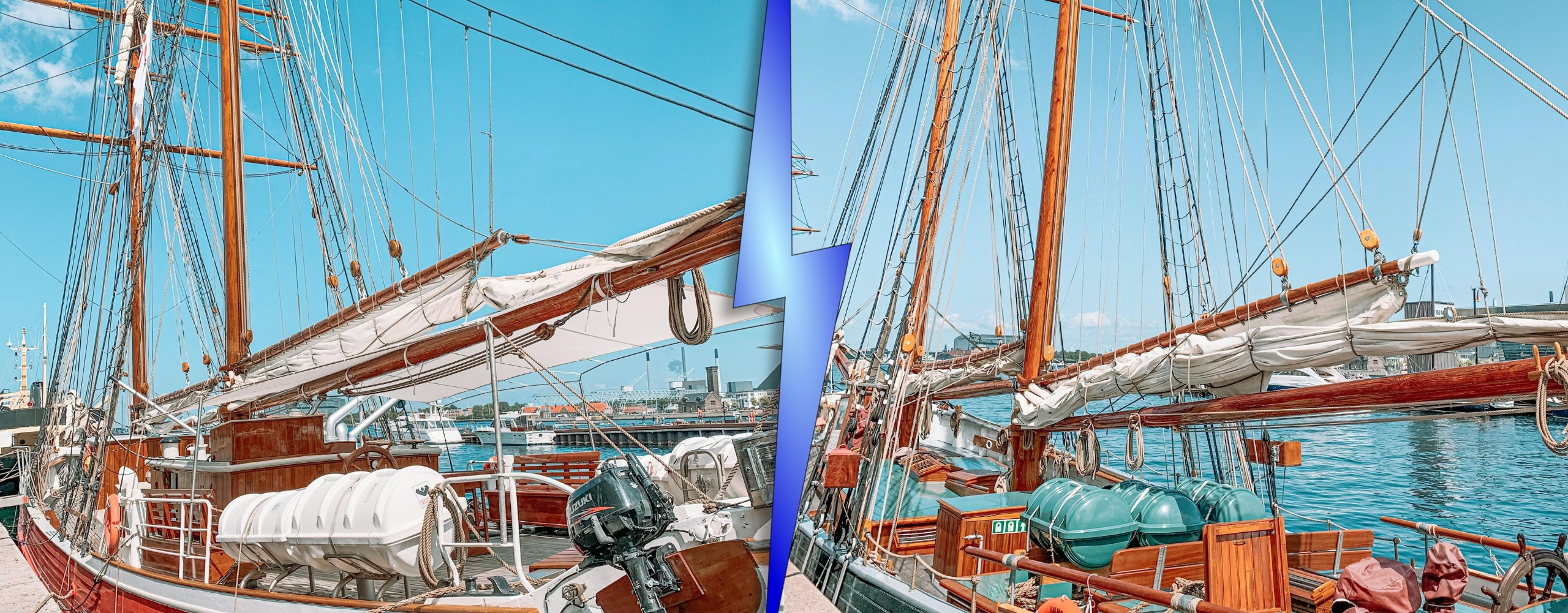Imagine stepping onto a sailboat, with the wind just perfect for an ideal sail. You’re set for an adventure on the water. But before you carve through the waves, there’s a vital step you need to take care of – sailboat rigging. Now, what does that entail?
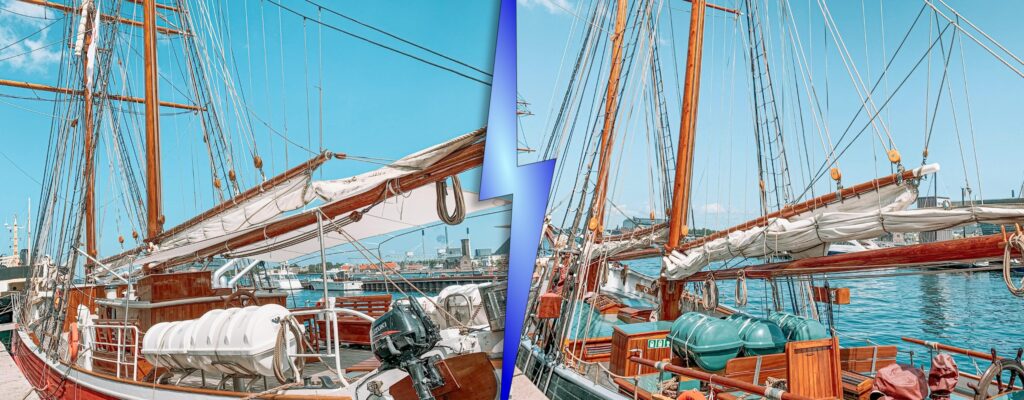
For better view click on images to expand
Rigging a sailboat is a fundamental skill for any sailor. It’s about setting up all the lines, masts, and sails in a way that will have you coasting along smoothly and safely. Sailboat rigging isn’t just for functionality; it’s crucial for safety! A well-rigged sailboat responds better, is easier to control, and is less likely to encounter mishaps. Think of it like the preparations you’d make before a road trip – check the tires, oil, and engine to ensure a safe journey. In sailing, rigging is your prep work.
First, let’s take a look at basic components of a sailboat and its rigging system:
Components of a Sailboat
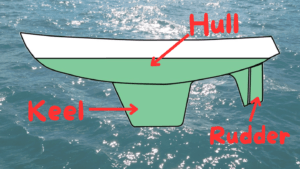
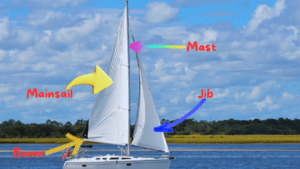
Hull: The main body of the boat, which provides buoyancy.
Mast: A vertical pole that supports the sails.
Boom: A horizontal pole that extends from the mast, supporting the bottom of the mainsail.
Sails: The primary means of propulsion, including the mainsail and jib/genoa.
Types of Sails
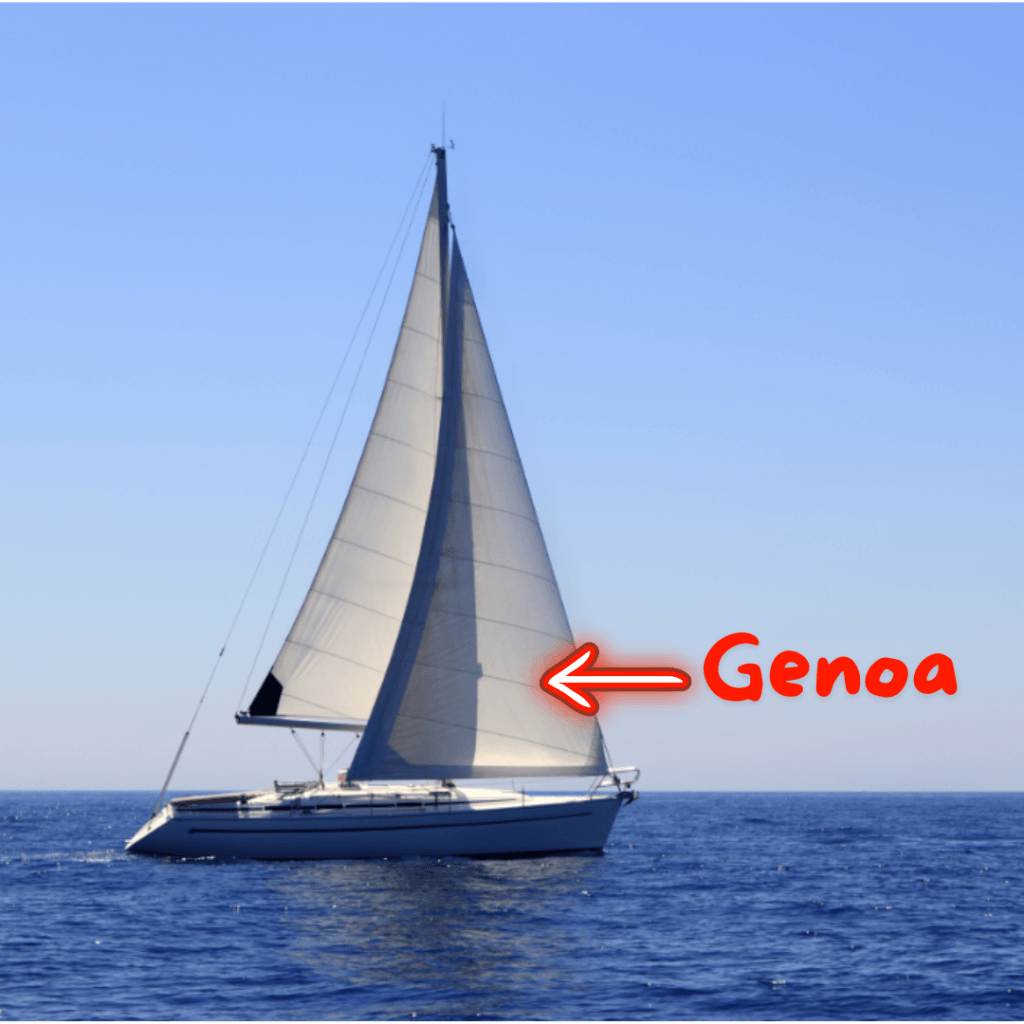
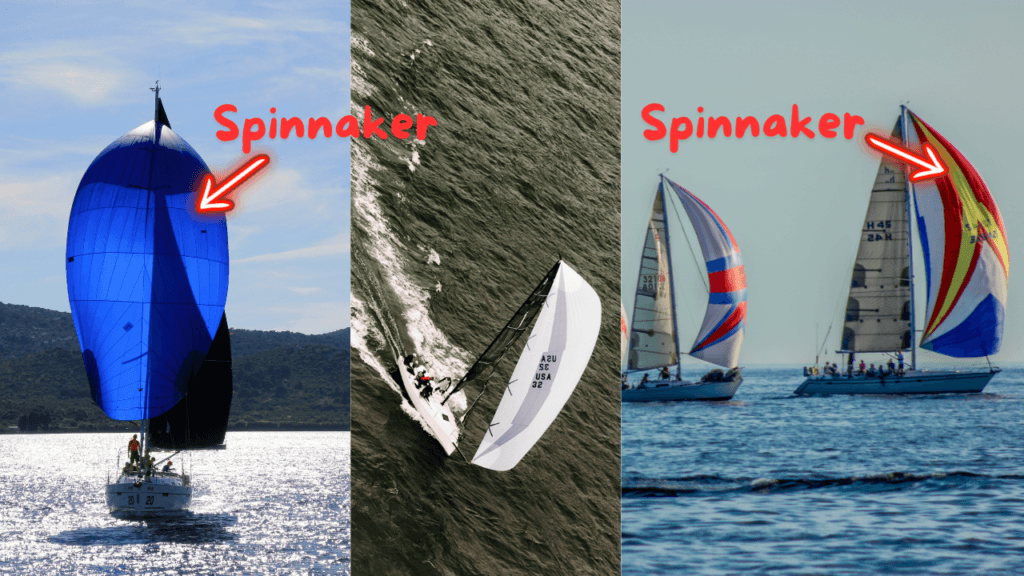
Mainsail: The primary sail attached to the mast and boom.
Jib: A triangular sail attached to the forestay and used in combination with the mainsail.
Genoa: A larger version of the jib, overlapping the mainsail.
Spinnaker: A large, lightweight sail used for sailing downwind.
Types of Rigging Systems
Starting with the basics, we’ve got a few common categories. Each rig has its own characteristics and advantages.
A. Sloop Rig
A sloop rig is the most common type of rigging. It is your widespread, a great all-rounder, versatile choice, sporting a single mast and two sails: a mainsail and a headsail (jib or genoa).
Example: The J/24, a popular one-design racing sailboat, uses a sloop rig for its simplicity and performance.
B. Cutter Rig
A cutter rig has a single mast but includes two or more headsails, typically a jib and staysail, along with a mainsail.
Example: The Bristol Channel Cutter, known for its offshore capabilities, uses a cutter rig for versatile sail handling.
C. Ketch Rig
A ketch rig features two masts: a mainmast and a shorter mizzen mast aft of the mainmast.
Example: The Westerly Discus 33 is a classic ketch, providing balanced sail options for varied conditions.
D. Yawl Rig
A yawl rig is similar to a ketch but with a smaller mizzen mast placed aft of the rudder post.
Example: The Hinckley Bermuda 40 is a notable yawl, offering a small mizzen for additional balance and sail control.
E. Schooner Rig
A schooner rig has two or more masts with the aft mast equal to or taller than the foremast.
Example: The Bluenose II is a famous schooner known for its traditional rig and powerful sail plan.
F. Cat Rig
A cat rig has a single mast positioned near the bow with one sail, usually a large mainsail.
Example: The Nonsuch 30, a popular cruising sailboat, uses a cat rig for its simplicity and ease of handling.
You’ll find a broad review of different types of sailing boats here.
Types of Rigging a Sailboat
Rigging on a sailboat is broadly categorized into two types: standing rigging and running rigging.
• Standing Rigging: Supports the mast and remains fixed in place.
• Running Rigging: Controls the sails and is adjusted frequently while sailing.
Each type has distinct functions, components, and variations, which are crucial to understanding for effective sailing
Standing Rigging
Standing rigging refers to the fixed lines and cables that provide structural support to the mast. It is critical for maintaining the mast’s position and stability. Key components of standing rigging include:
A. Stays
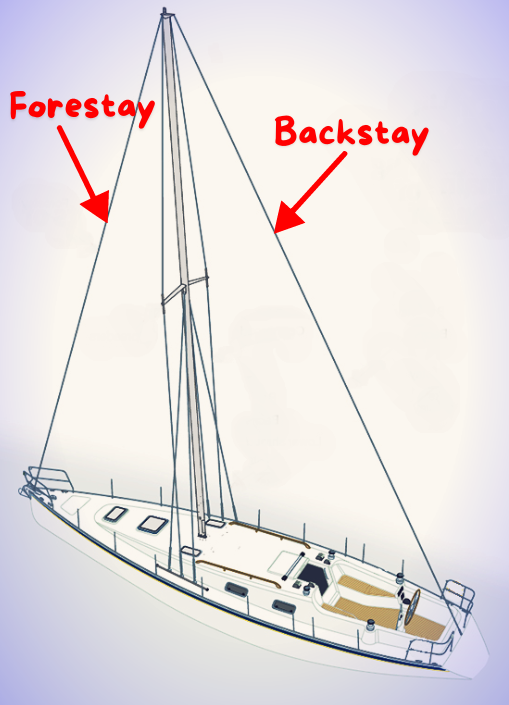
Stays are cables or rods that stabilize the mast along the fore-and-aft axis. They help resist the forward and backward forces on the mast, especially when sailing upwind. There are two primary types of stays:
1. Forestay
Description: Runs from the masthead to the bow.
Function: Supports the mast forward and often holds the jib or genoa sail.
Example: In a sloop rig, the forestay is essential for flying the headsail.
2. Backstay
Description: Runs from the masthead to the stern.
Function: Provides aft support to the mast and helps control mast bend.
Example: On a racing sailboat, an adjustable backstay can be used to fine-tune the mast shape for optimal sail performance.
B. Shrouds
Shrouds are cables that provide lateral support to the mast, preventing it from falling sideways. They run from the masthead down to the deck or chainplates on either side of the boat.
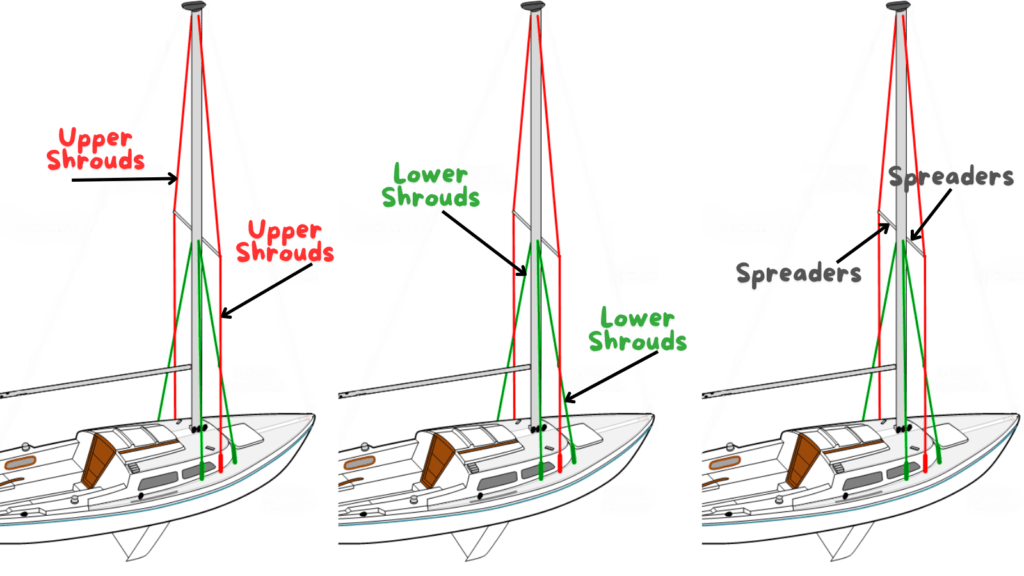
1. Upper Shrouds
Description: Extend from the masthead to the chainplates near the deck.
Function: Stabilize the top of the mast laterally.
Example: On a cruising yacht, upper shrouds are crucial for maintaining mast integrity.
2. Lower Shrouds
Description: Run from the lower part of the mast to the deck or chainplates.
Function: Support the lower section of the mast and prevent bending.
Example: In a fractional rig, lower shrouds are essential for controlling mast bend and sail shape.
C. Spreaders
Spreaders are horizontal or angled supports that extend from the mast to the shrouds, pushing them outward to provide additional leverage and support.
Function: Increase the effectiveness of shrouds by providing a wider base of support.
Example: On a tall mast, multiple sets of spreaders distribute loads and reduce compression forces.
D. Chainplates
Chainplates are metal plates or fittings attached to the hull or deck, serving as attachment points for shrouds and stays.
Function: Anchor the rigging lines securely to the boat.
Example: On a bluewater cruiser, robust chainplates are essential for handling heavy loads in rough seas.
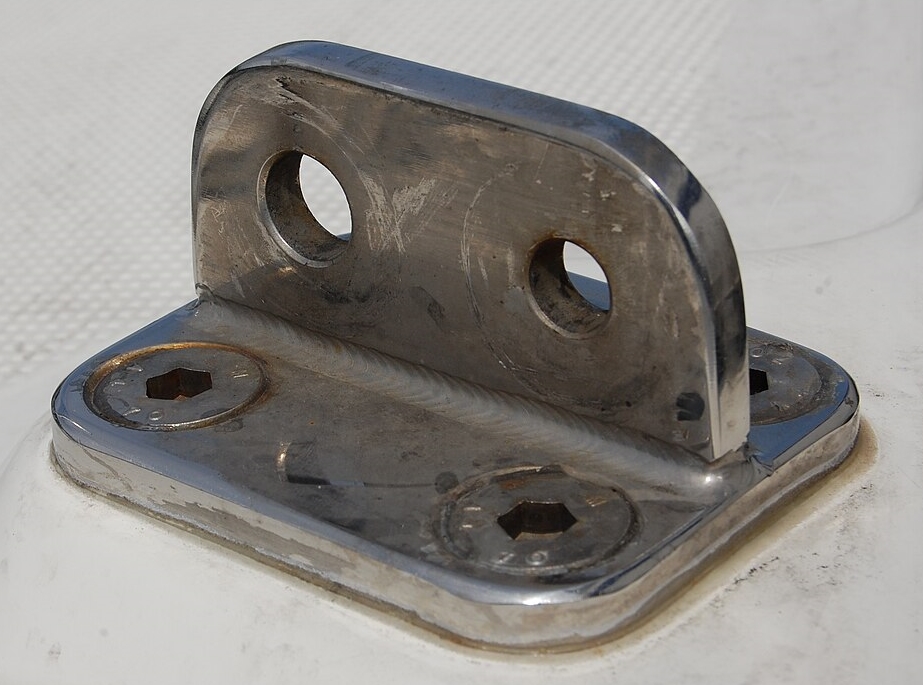
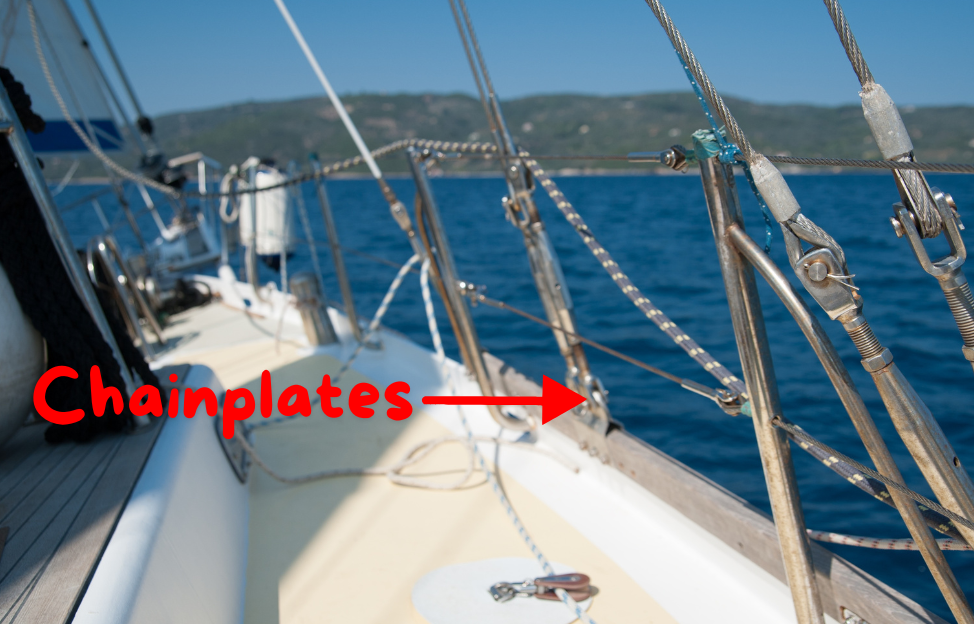
Running Rigging
Running rigging refers to the lines used to control the sails and adjust their position relative to the wind. This rigging is dynamic and is adjusted frequently during sailing. Key components include:
A. Halyards
Halyards are lines used to hoist and lower sails.
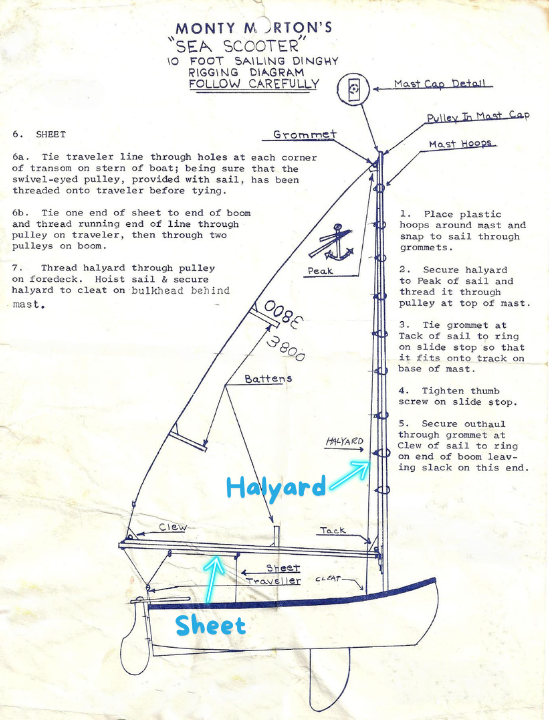
1. Mainsail Halyard
Function: Raises and lowers the mainsail.
Example: On a sloop rig, the mainsail halyard is crucial for setting the mainsail.
2. Jib/Genoa Halyard
Function: Raises and lowers the headsail.
Example: On a cutter rig, multiple halyards are used for different headsails.
B. Sheets
Sheets are lines used to control the angle of the sails relative to the wind.
1. Mainsheet
Function: Controls the angle of the mainsail.
Example: On a ketch, the mainsheet is used to adjust the main and mizzen sails.
2. Jib/Genoa Sheets
Function: Control the angle of the headsail.
Example: On a sloop, the jib sheets are crucial for adjusting sail trim when tacking.
C. Downhaul and Cunningham
Downhauls and cunninghams are lines used to adjust the tension in the luff of a sail.
Function: Fine-tune sail shape by adjusting the luff tension.
Example: On a racing dinghy, a cunningham is essential for adjusting sail shape in varying wind conditions.
D. Outhaul
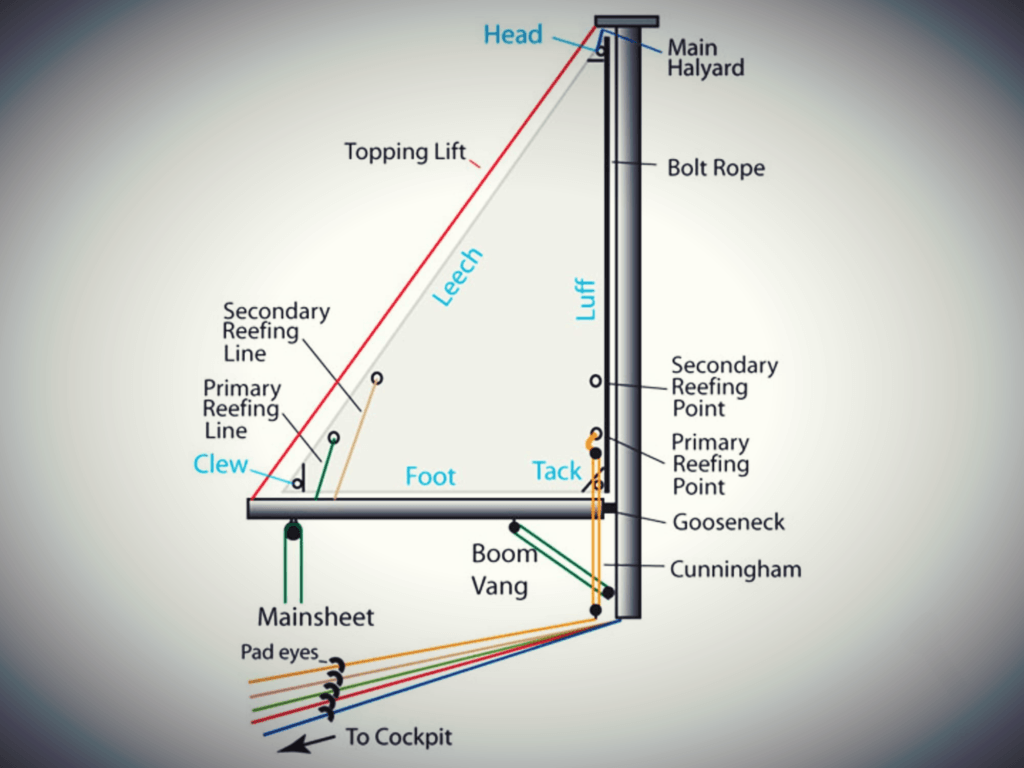
Outhauls are lines used to tension the foot of the mainsail.
Function: Adjust the depth of the mainsail.
Example: On a performance sailboat, the outhaul is used to flatten or deepen the sail for different wind conditions.
E. Vangs
Vangs are lines or tackle systems used to control the boom’s vertical position.
Function: Adjusts the leech tension and twist of the mainsail.
Example: On a cruising yacht, a boom vang helps control sail shape and reduce boom lift in downwind sailing.
F. Reefing Lines
Reefing lines are used to reduce the sail area in strong winds.
Function: Secure and adjust the sail area to make the boat easier to handle.
Example: On a coastal cruiser, reefing lines are essential for reducing mainsail area in heavy weather.
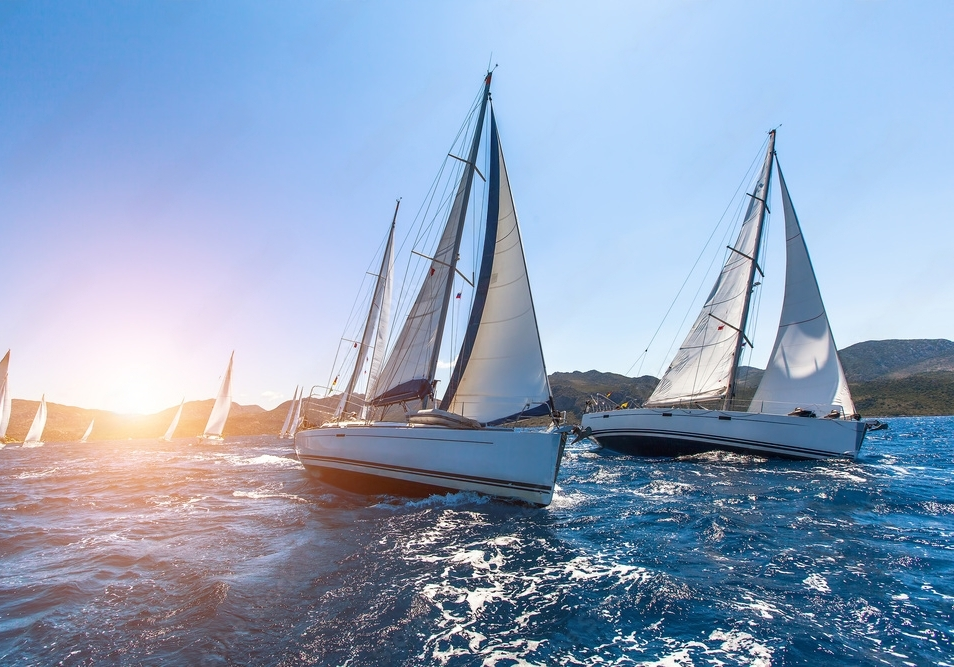
Remember, every sailboat has its unique characteristics and quirks, so take the time to familiarize yourself with your boat’s specific rigging system. Whether you’re preparing for a casual day sail or an extended voyage, proper rigging ensures that you’re ready to harness the wind and enjoy the adventure. Understanding the different types of rigging on a sailboat is essential for safe and effective sailing. Whether it’s the fixed support of standing rigging or the dynamic control of running rigging, each component plays a critical role in the overall performance of the boat. By selecting the right rigging system, maintaining it properly, and understanding its functions, sailors can enhance their sailing experience, improve safety, and achieve better performance on the water. Explore my in-depth review here.
Thanks for taking the time to read through this guide. I’d love to hear your feedback, so drop your thoughts and experiences in the comments below. Happy Sailing!

